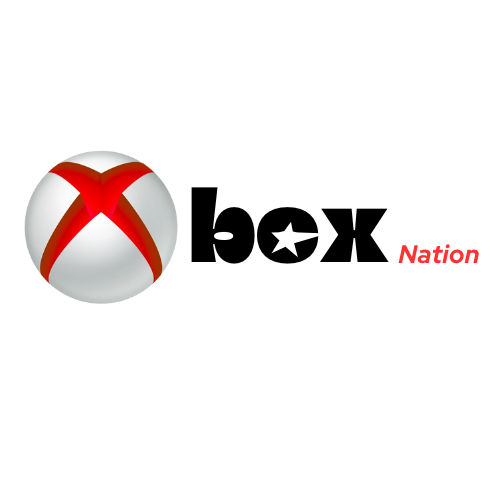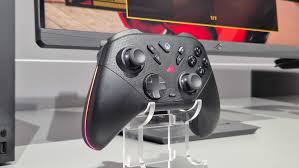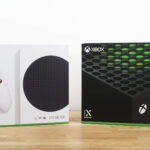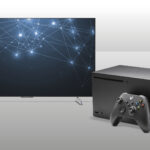The gaming community is buzzing with anticipation as whispers of the Xbox Elite Controller Series 3 continue to circulate through industry channels. With Microsoft’s history of delivering premium gaming peripherals, the potential successor to the beloved Elite Series 2 has enthusiasts, competitive gamers, and casual players alike wondering what innovations the tech giant will bring to the table. In this comprehensive deep dive, we’ll explore everything from the latest leaks to the most requested features that could define the next generation of premium gaming controllers.
- The Evolution of Xbox Elite Controllers: A Brief History
- Latest Leaks and Rumors Surrounding Series 3
- Manufacturing Patents and Design Documents
- Supply Chain Intelligence
- Leaked Imagery and Specifications
- Community Wishlist: Features Gamers Want Most
- Enhanced Durability and Build Quality
- Improved Battery Life and Charging Solutions
- Advanced Customization Software
- Modular Component System Expansion
- Adaptive Features and Accessibility
- Competitive Gaming Features
- Technical Specifications: What We Might Expect
- Price Predictions and Market Positioning
- Competition Analysis: How Series 3 Must Compete
- Environmental Considerations and Sustainability
- Release Date Speculation and Availability
- Professional Gaming and Esports Integration
- Content Creator and Streaming Features
- Long-Term Support and Firmware Updates
- Warranty and Customer Support Improvements
- Integration with Xbox Ecosystem Services
- The Future of Premium Gaming Controllers
- Conclusion: What Series 3 Needs to Succeed
The Evolution of Xbox Elite Controllers: A Brief History
Before diving into what’s coming next, it’s essential to understand the legacy that the Elite Series 3 will inherit. Microsoft revolutionized the premium controller market when they introduced the original Xbox Elite Wireless Controller in 2015. This game-changing peripheral offered unprecedented customization options, including interchangeable components, hair-trigger locks, and premium build quality that justified its premium price point.
The Xbox Elite Wireless Controller Series 2, launched in November 2019, refined this formula with enhanced features including adjustable tension thumbsticks, rechargeable battery with up to 40 hours of gameplay, Bluetooth connectivity, and a charging dock. Despite its improvements, the Series 2 wasn’t without criticism – durability concerns, stick drift issues, and bumper failures became common complaints among the gaming community.
Latest Leaks and Rumors Surrounding Series 3
Manufacturing Patents and Design Documents
Recent patent filings discovered through the United States Patent and Trademark Office have revealed intriguing possibilities for the next iteration. These documents suggest Microsoft is exploring advanced haptic feedback systems that go beyond traditional rumble motors, potentially incorporating technology similar to what we’ve seen in competing premium controllers.
According to reports from industry insiders on gaming forums and tech communities, Microsoft has been conducting extensive focus group testing with professional esports athletes and content creators. These sessions allegedly focused on ergonomics, button placement optimization, and durability improvements – all areas where the Series 2 received mixed feedback.
Supply Chain Intelligence
Manufacturing sources from Asia have indicated that component orders matching Xbox controller specifications have increased significantly in recent months. While Microsoft hasn’t confirmed these reports, the timing aligns with typical production cycles for holiday season releases. Industry analysts suggest that if these leaks prove accurate, we could see an announcement during major gaming events in the coming months.
Leaked Imagery and Specifications
Although no official images have surfaced, alleged prototype photographs circulating on gaming subreddits and Twitter show a controller with a refined design aesthetic. The images, which remain unverified, display what appears to be additional customization points and a modified grip texture pattern. Tech journalists have been unable to authenticate these images, so they should be viewed with healthy skepticism.
Community Wishlist: Features Gamers Want Most
Enhanced Durability and Build Quality
The number one request from current Elite Series 2 owners centers around improved durability. Many users have reported issues with stick drift, bumper breakage, and rubber grip deterioration within the first year of ownership. For a controller commanding a premium price point, these reliability concerns have damaged trust in the product line.
Professional gamers have been particularly vocal about needing components that can withstand thousands of hours of intense gameplay. Reinforced internal mechanisms, higher-quality thumbstick potentiometers, and more durable tactile switches for face buttons would address the most common failure points. Some community members have suggested Microsoft adopt Hall Effect sensors for thumbsticks, a technology that eliminates stick drift by using magnetic field detection rather than physical contact points.
Improved Battery Life and Charging Solutions
While the Series 2’s 40-hour battery life was impressive at launch, modern gaming sessions demand even more endurance. With cloud gaming, streaming, and marathon gaming sessions becoming increasingly common, users are requesting battery performance that can exceed 60 hours on a single charge.
Additionally, the charging dock included with the Series 2, while convenient, has received criticism for its proprietary design and occasional connection issues. Gamers are hoping for USB-C charging implementation, which would align with industry standards and provide faster charging times. Some enthusiasts have even suggested wireless charging capabilities, though this would require significant engineering considerations given the controller’s weight and battery requirements.
Advanced Customization Software
The Xbox Accessories app currently allows users to remap buttons, adjust trigger sensitivity, and create multiple profiles. However, power users want deeper customization options including per-game automatic profile switching, more granular dead zone adjustments, and the ability to customize vibration intensity for individual motors.
PC gamers particularly desire better integration with Windows 11 and Game Bar features, including on-screen indicators for profile changes, battery status overlays, and streamlined firmware update processes. Cross-platform compatibility improvements would also benefit users who game across Xbox consoles, PC, and mobile devices.
Modular Component System Expansion
The current interchangeable component system – including thumbsticks, D-pads, and paddle configurations – represents one of the Elite controller’s strongest features. For Series 3, users are requesting an expanded ecosystem of official components, including:
Thumbstick Variations: Beyond the current dome and concave options, gamers want extended height sticks for increased precision in shooters, textured surfaces for improved grip, and asymmetric designs optimized for specific game genres.
D-Pad Options: While the faceted and standard D-pad options are functional, fighting game enthusiasts desire additional configurations, potentially including a arcade-style directional input optimized for fighting games and retro titles.
Paddle Diversity: Additional paddle shapes, sizes, and resistance levels would allow players to find the perfect configuration for their hand size and grip style. Some users have suggested programmable paddles with multiple input stages for complex macro execution.
Faceplate Customization: Official faceplates in various colors and finishes would allow users to personalize their controller’s appearance without voiding warranties through third-party modifications.
Adaptive Features and Accessibility
Microsoft has demonstrated commitment to gaming accessibility through the Xbox Adaptive Controller. Incorporating some of these learnings into the Elite Series 3 would expand its appeal and functionality. Programmable button combinations, adjustable button activation forces, and compatibility with external adaptive accessories would make the controller more inclusive.
Visual and audio feedback options for button presses could assist players with hearing or visual impairments. Customizable LED indicators showing current profile, battery status, or connection strength would provide at-a-glance information without interrupting gameplay.
Competitive Gaming Features
Professional esports athletes have specific requirements that could influence Series 3 development. Tournament-legal customization options, rapid profile switching via dedicated hardware buttons, and certified latency specifications would strengthen the controller’s position in competitive gaming.
Some competitors have implemented tournament lock modes that disable wireless connectivity and require wired connection to eliminate any potential lag or interference. Similar features in the Elite Series 3 would address concerns from tournament organizers and professional players.
Technical Specifications: What We Might Expect
Connectivity Improvements
While the Series 2 offers both USB-C wired connection and wireless via Xbox Wireless protocol or Bluetooth, the Series 3 could introduce enhanced connectivity options. Wi-Fi Direct technology could provide lower latency wireless performance, particularly beneficial for cloud gaming scenarios where every millisecond matters.
Improved Bluetooth 5.2 or newer standards would offer better range, stability, and energy efficiency. Multi-device pairing with quick switching would benefit users who alternate between gaming platforms throughout their sessions.
Processor and Memory Upgrades
Modern controllers are essentially specialized computers, and upgrading the internal processor would enable more sophisticated features. Enhanced onboard memory could store additional profiles directly on the controller, eliminating the need to reconfigure settings when switching between devices.
Faster processing would enable more responsive input polling rates, potentially reaching 1000Hz or higher – a feature that competitive PC gamers particularly value. Some high-end third-party controllers already offer polling rates exceeding the standard 125Hz, giving Microsoft a benchmark to surpass.
Advanced Sensor Technology
Gyroscopic sensors and accelerometers could enable motion control options for supported games, bridging functionality gaps with competing platforms. While not every game would utilize these features, their inclusion would provide developers additional creative options and players more input flexibility.
Precision triggers with adjustable resistance and multiple detection points could revolutionize racing games and flight simulators. Imagine trigger pressure affecting in-game actions with analog precision currently impossible with standard digital triggers.
Audio Integration
Built-in audio enhancement features could benefit users of wired headsets. Dedicated audio processing chips supporting spatial audio standards like Windows Sonic, Dolby Atmos, or DTS:X would provide competitive advantages in games where directional audio provides tactical information.
Some enthusiasts have suggested integrating low-latency Bluetooth audio specifically for wireless headset connectivity, though this would require careful power management to avoid compromising battery life.
Price Predictions and Market Positioning
The Elite Series 2 launched at $179.99 USD, positioning it firmly in the premium controller segment. Given manufacturing cost increases, component improvements, and inflation since 2019, a price increase seems inevitable for the Series 3.
Industry analysts suggest a launch price between $199.99 and $229.99 would align with market expectations for a premium product with meaningful improvements. However, Microsoft must balance pricing with value perception – too high a price could push users toward competing products from companies like SCUF, Battle Beaver, or Thrustmaster.
A tiered release strategy could address different market segments. A standard Series 3 at around $199.99 with core improvements, and a Series 3 Pro edition at $249.99 with additional components, enhanced features, or exclusive finishes would let users choose their investment level.
Bundle options including Play and Charge kits, additional component sets, or carrying cases would provide perceived value while allowing Microsoft to maintain healthy profit margins.
Competition Analysis: How Series 3 Must Compete
SCUF Gaming Controllers
SCUF has established itself as the premium choice for many professional gamers, offering extensive customization, proven durability, and manufacturer support for competitive gaming. Their controllers typically range from $159.99 to $299.99 depending on customization options.
The Series 3 must match or exceed SCUF’s build quality reputation while leveraging Microsoft’s ecosystem integration advantages. Official Xbox certification, seamless firmware updates, and guaranteed compatibility with current and future Xbox platforms provide competitive differentiation.
Sony DualSense Edge
PlayStation’s entry into the premium controller market with the DualSense Edge at $199.99 has raised consumer expectations. Its modular stick caps, back buttons, and adjustable triggers set a baseline for premium features. However, its shorter battery life (approximately 5-10 hours) and limited Xbox compatibility give Microsoft opportunities to position the Elite Series 3 favorably.
Third-Party PC Gaming Controllers
Companies like Razer, Logitech, and Thrustmaster have released PC-focused controllers with high polling rates, RGB lighting, and gaming-specific features. While these generally don’t offer the same console integration, their competitive pricing (typically 79.99−79.99−149.99) attracts PC gamers who might otherwise consider the Elite controller.
Microsoft’s advantage lies in universal compatibility – a controller that works flawlessly across Xbox Series X|S, Xbox One, Windows 10/11, Android, and iOS devices provides value that platform-specific alternatives cannot match.
Environmental Considerations and Sustainability
Modern consumers increasingly consider environmental impact when making purchasing decisions. Microsoft has made corporate commitments to sustainability, and the Elite Series 3 presents an opportunity to demonstrate these values.
Using recycled materials in controller construction, reducing packaging waste, and implementing repairable designs would align with environmental goals while potentially reducing manufacturing costs long-term. Offering individual replacement components through official channels would extend controller lifespan and reduce electronic waste.
A controller built to last five or more years with user-replaceable components becomes more justifiable at premium pricing than one requiring full replacement when individual parts fail. This approach would also address the durability criticisms that plagued the Series 2.
Release Date Speculation and Availability
Based on Microsoft’s typical product cycles and industry patterns, several potential release windows emerge for the Elite Series 3:
Holiday 2024: This timing would mark approximately five years since the Series 2 launch, a reasonable refresh cycle for premium peripherals. Announcement at a major gaming showcase in summer 2024 with fall availability would maximize holiday sales potential.
Summer 2024: A mid-year release could avoid the crowded holiday market while capitalizing on summer gaming season. This timing might indicate a smaller iterative update rather than revolutionary redesign.
Early 2025: Waiting until after the holiday season could indicate Microsoft is taking additional time to perfect the product and address Series 2 criticisms comprehensively. This timing might coincide with major game releases that benefit from Elite controller features.
Supply chain considerations will likely influence release timing significantly. Global semiconductor shortages, manufacturing capacity constraints, and shipping logistics all factor into product launch decisions for hardware manufacturers.
Professional Gaming and Esports Integration
The elite controller concept aligns perfectly with competitive gaming needs, and Microsoft has opportunities to strengthen relationships with esports organizations and professional players through Series 3 development.
Official partnerships with esports teams for product testing and endorsement would provide credibility and valuable feedback during development. Signature editions featuring team branding or player-specific configurations could create collectible value and strengthen brand loyalty.
Tournament certification programs ensuring specific latency standards and performance characteristics would give tournament organizers confidence in approving the controller for competitive use. Some esports titles have strict peripheral requirements, and addressing these proactively would expand the Series 3’s competitive gaming applications.
Training modes or companion software helping players improve their skills, analyze input patterns, or optimize configurations for specific games could differentiate Microsoft’s offering from competitors focused purely on hardware.
Content Creator and Streaming Features
Game streaming and content creation have become massive sectors of the gaming industry. Features specifically supporting creators could expand the Elite controller’s appeal beyond traditional gaming applications.
Programmable buttons for streaming software control – scene switching, mic muting, starting recordings – would eliminate the need for separate stream decks or keyboard access during gameplay. Integration with OBS Studio, Streamlabs, or Xbox’s native streaming tools would streamline creator workflows.
Customizable RGB lighting synchronized with game events, health status, or stream alerts would enhance visual presentations for viewers. While some may consider lighting purely aesthetic, it provides genuine functional value in streaming contexts.
Companion mobile apps allowing moderators or viewers to trigger controller vibrations or input patterns during streams would enable interactive content possibilities. Such features would need careful implementation to avoid being disruptive, but could create unique engagement opportunities.
Long-Term Support and Firmware Updates
One advantage of modern connected controllers is the possibility of feature expansion through firmware updates. Microsoft should commit to multi-year support for Series 3, regularly releasing updates that add functionality, improve performance, and maintain compatibility with evolving platforms.
A clear firmware roadmap communicated to users would build confidence in the long-term value proposition. Knowing that the controller will receive feature updates and improvements years after purchase justifies premium pricing more effectively than hardware alone.
Beta firmware programs allowing enthusiast users to test experimental features would engage the community while providing Microsoft valuable feedback before wide releases. This approach has proven successful for other gaming hardware manufacturers.
Warranty and Customer Support Improvements
Given the durability issues that affected Series 2 reputation, Microsoft must address warranty and support comprehensively with Series 3. Extended warranty options, streamlined replacement processes, and transparent communication about common issues would rebuild user trust.
A two-year minimum warranty period instead of the standard one year would demonstrate confidence in build quality improvements. Optional extended warranty purchases providing three to five years of coverage would appeal to users planning long-term investment in the ecosystem.
Advance replacement programs minimizing downtime when issues occur would particularly benefit competitive gamers and content creators who depend on their equipment daily. Cross-shipping replacement units before receiving the defective controller would maintain this user segment’s productivity.
Integration with Xbox Ecosystem Services
The Elite Series 3’s value proposition extends beyond hardware into how it integrates with Microsoft’s broader gaming ecosystem. Deep integration with Xbox Game Pass, Cloud Gaming, and Xbox Live could provide unique advantages.
Automatic profile suggestions based on games in your library would simplify configuration for new titles. Cloud-synced settings accessible across any Xbox console or PC would eliminate setup repetition when gaming on different devices.
Achievement integration rewarding controller customization experimentation or mastery of advanced features would gamify the learning process and encourage users to explore capabilities fully. Special challenges or rewards exclusive to Elite controller users could create community around the product.
The Future of Premium Gaming Controllers
Looking beyond Series 3 specifications, it’s worth considering where premium controller technology is heading and how Microsoft can position itself as an industry leader.
Adaptive AI Features: Machine learning algorithms analyzing playstyles and suggesting optimal configurations could help users unlock performance they didn’t know was possible. Privacy-conscious implementation of such features would be essential.
Biometric Integration: Heart rate monitors or skin conductance sensors could enable games to adapt to player stress levels or physical state. While currently niche, such features could find applications in fitness games, training software, or accessibility scenarios.
Modular Architecture: A truly modular controller where virtually every component is user-replaceable would maximize longevity and customization while supporting sustainability goals. The engineering challenges are significant, but the long-term value proposition could justify development investment.
Cross-Platform Universal Standards: Industry cooperation on standard controller APIs and features would benefit everyone in the gaming ecosystem. Microsoft’s position to lead such initiatives could strengthen the broader gaming community while benefiting their hardware sales.
Conclusion: What Series 3 Needs to Succeed
The Xbox Elite Controller Series 3 faces high expectations and significant competition. Success requires addressing Series 2’s well-documented weaknesses while innovating in meaningful ways that justify premium pricing.
Durability must be the foundation – without solving reliability issues, no amount of new features will satisfy users. Once that baseline is established, thoughtful feature additions serving competitive gamers, content creators, and enthusiast players will define the product’s market position.
Balancing innovation with the practical needs of daily users separates genuinely useful products from those loaded with gimmicks. Microsoft has demonstrated the ability to create exceptional gaming hardware; the Elite Series 3 represents an opportunity to refine that expertise and reclaim the premium controller crown.
As we await official announcements, the gaming community continues speculating, hoping, and preparing for what could be the definitive premium gaming controller of this console generation. Whether Microsoft delivers on that potential remains to be seen, but the foundation of the Elite controller line suggests they have both the capability and motivation to create something truly special.
The coming months will reveal whether these leaks, rumors, and wishlist features materialize into reality. One thing is certain: when the Xbox Elite Controller Series 3 finally arrives, it will face intense scrutiny from a community passionate about gaming and uncompromising in their standards for premium products.
Sources and References:
- Microsoft Xbox Official Website: https://www.xbox.com/accessories
- United States Patent and Trademark Office: https://www.uspto.gov/
- Xbox Wire News: https://news.xbox.com/
- Gaming Industry Reports: https://www.gamesindustry.biz/
- Reddit Gaming Communities: https://www.reddit.com/r/xboxone/ and https://www.reddit.com/r/xbox/
- Tech Review Sites: https://www.theverge.com/gaming-tech and https://www.ign.com/tech
- Competitive Gaming Forums: https://www.reddit.com/r/CompetitiveGaming/








